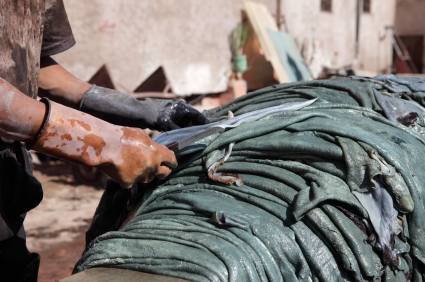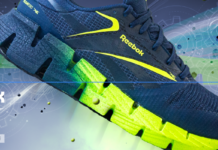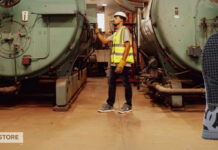Leather Tanning
Tanning of leather is the process created to convert skin or hide into leather. These have the ability to absorb chemicals such as tannic acid which keep them from decomposing, water-resistant durable and supple. Surfaces of the hide include oil glands and hair which is considered the grain side while the flesh side is considered to be softer. Hides come from sheep, cattle, and porcine animals. The process is essentially a reaction of the fibers of collagen with different chemicals of which, the most prevalent would be vegetable tannins and trivalent chromium for starters.
Leather Tanning Process
The leather making process is what is covered under this section. Many different steps have to be taken when converting hides into usable leather. Two types of tanning such as chrome tanning and vegetable tanning are covered below. Chrome is the tanning process in about 90 percent of US production. For all leather making, the process involves trimming, fleshing, unhairing and soaking as the first step or Beamhouse process. The second step of splitting, bating, wringing, pickling and tanning are all tanyard processes. The final or finishing process includes plating, dry milling, spray finishing, staking and conditioning.
Tanning By Vegetable Tanning
The oldest tanning process is by vegetable tanning and the leathers included in this process are sole and heavy leathers. Hides are wet and then trimmed, fleshed, de-haired by liming, then scraped by machine, de-limed to make leather receptive to the tanning agent. Bating is them performed which is an enzyme action imparts flexibility, stretch and softness to the leather. Deliming and bating are usually performed together for best results.
In some cases treating the hide with a brine solution is called pickling and adjusts the acidity. In this particular process, the concentration of materials for tanning is lower and is increased as the three week period goes on. Hides can be split or cropped after wringing. Heavier hides can be scrubbed and retanned. Sole leather is commonly dipped into drums filled with chemical agents for removal of tannins and bleaching. Most leathers with this sort of tanning process do not undergo finishing, coloring, fatliquoring or retanning. Drying processed leather can happen by air drying or vacuum drying,
Tanning by Chrome Process
As opposed to vegetable tanned leather, chrome tanned leather is more pliable and softer as well as having a higher stability to temperature, water stable and usually takes less time to tan then by vegetable tanning. Chrome tanning is better for pig, lamb, sheep, goat and lightweight cattle hide. The starting process is identical for the chrome tanning as it is for vegetable tanning. Chrome tanning adds additional processes such as dyeing, fatliquoring, and retanning to produce leathers that are usable and degreasing of the leather is also a good part of this process. This occurs by a one bath process that causes a reaction between the chemical and the hide. Hides in this process are pickled at a 3PH or lower.
The tanning materials for this process would be introduced while ultimately raising the PH level of the leather. After the bath is completed, leather is wrung, piled down, split into grain and flesh layers, graded and shaved. The leathers of grain are then separated for fatliquoring, dyeing, and retanning. Leather that is not going to be scratched or scuffed can be surface dyed only. Leather, like that for shoes will be dyed deeper into the material. Dyes like this are compounds that have an aniline base and combine with the leather for a compound that is insoluble.
The process known as Fatliquoring puts oil into the leather as a replacement for the oils that were lost in the other processes. It is usually performed inside a drum using an emulsion of oil at very high temperatures for around a half hour. After this process is finished, the leather is wrung, dried, set out and then finished.
Finishing of Leathers
After drying, leathers have a variety of ways to be finished such as treated with pigments, resins or dyes, shellacked, buffed with abrasives that are fine, and lacquered with items such as urethane. Other finishes can include solvent based or water based finished can also be applied. The next step in the process is plating for smoothing the leather. At this time, leather can also be embossed if the leather process requires it.
To maintain your leathers and keep them in top condition proper cleaning should be followed with the addition of leather waterproofing conditioners, creams, and solutions.




